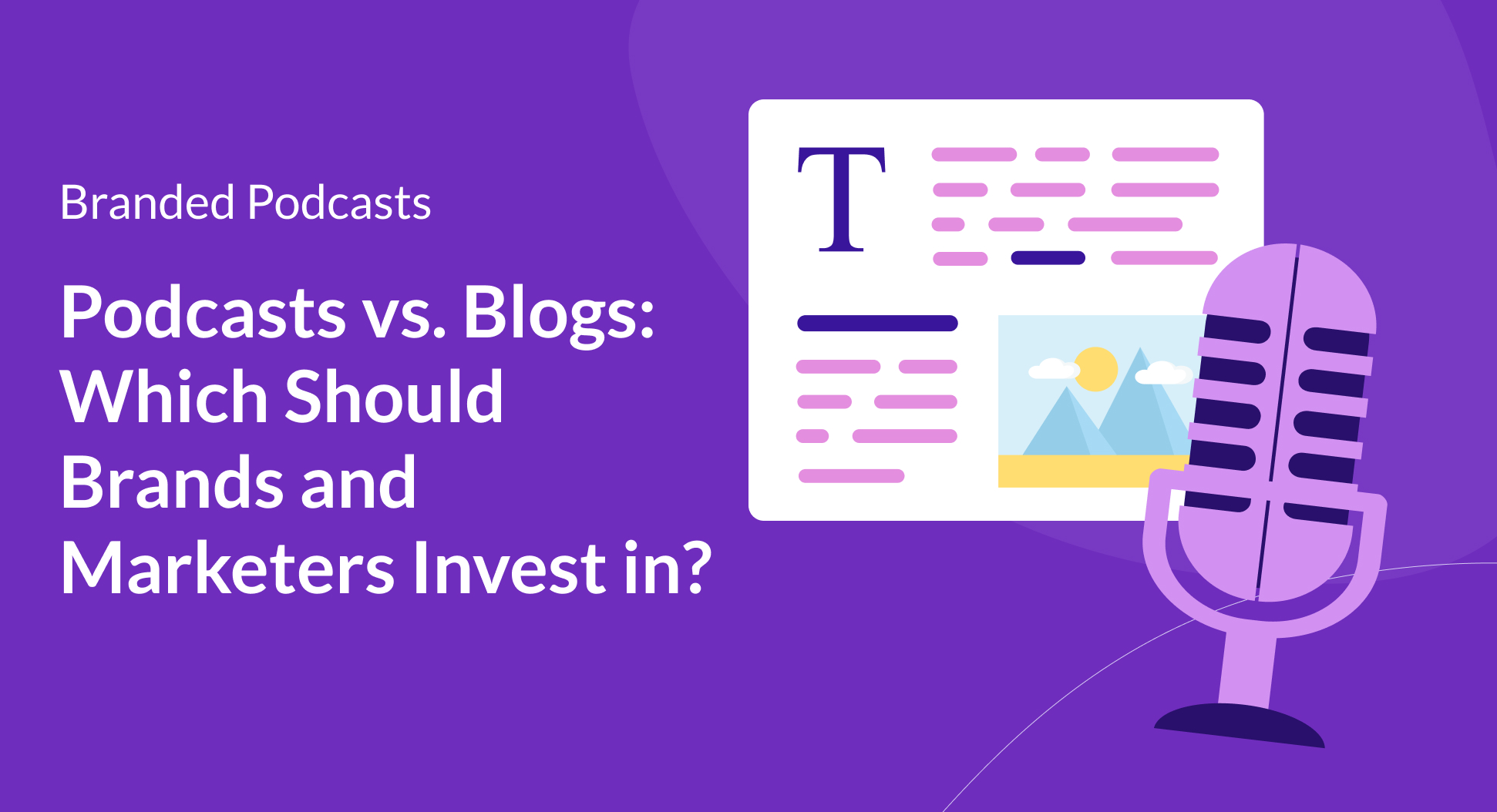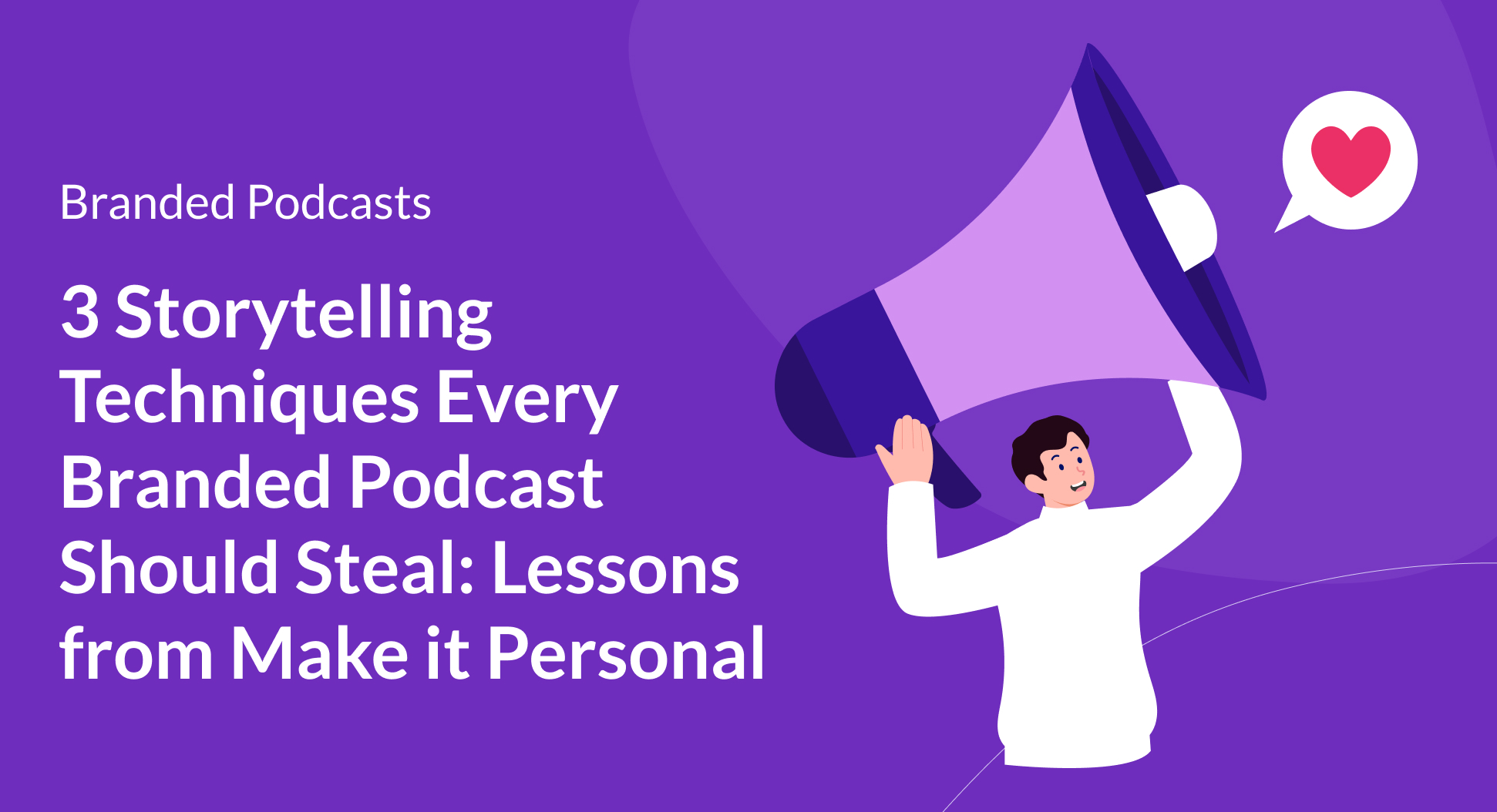Contents
The secret is out: podcasts are all the rage. Listenership has more than tripled in the past decade—in 2023, 42% of Americans had listened to a podcast within the past month compared to just 12% in 2013.
People listen to podcasts for a variety of reasons. Some may tune in to learn something new, while others listen to unwind and relax with some casual entertainment.
But podcasts can serve many more purposes than just personal learning and development or a laugh on your commute home. Launching a corporate podcast can also offer a multitude of benefits from a brand perspective, or in the case of an internal podcast series, help to boost employee engagement and morale.
In this blog post, we’ll lay out everything you need to know about an internal podcast including benefits, how to launch one, and examples.
What is an internal podcast?
First things first: what exactly is an internal podcast? An internal podcast is a podcast series specifically geared towards employees at an organization. It can be accessible to the public, or private so only employees can access it.
An internal podcast can serve a variety of purposes including:
- Educating your company’s employee base on certain topics
- Boosting employee engagement and morale
- Encouraging employees to learn, grow, and develop their skills
- Spreading company-wide news and updates in a way that’s fun and accessible
- Showcasing your company’s work and big wins to inspire employees and fuel their passion
Internal podcasts can be useful for companies of any size, but they can be particularly helpful for large-scale companies who are looking for an easy way to keep their employee base updated and in the know about important updates.
It’s no secret that not everyone takes the time to read all-staff emails or memos. Forbes even found that nearly three-quarters of employees don’t open company-wide emails. So if you’re looking to get your message through to your team, a podcast series is a creative and engaging way to communicate with a large number of employees.
If you opt for an employee podcast that’s open to the public, you can seamlessly blend internal and external communications efforts. Not only will this demonstrate the company’s transparency, but it can also give the average person a backstage pass to its inner workings.
Examples of internal podcasts
Tell Me Why by American Airlines

For example, in their long-running podcast series Tell Me Why, American Airlines executives discuss the reasoning behind the decisions they make such as how they choose certain routes and destinations, or why they fly a certain type of aircraft.
Now in its sixth season, the podcast answers employees’ burning questions while also satisfying the public’s curiosity. Anyone can tune into the show through all the regular podcasting platforms, but employees can also tune in and watch the video version of the podcast on their intranet portal, which offers an added layer of engagement for those on the inside.

WeAreNetflix by Netflix
Another example of a well-executed internal podcast is Netflix’s WeAreNetflix. Hosted by Senior Software Engineer Lyle Troxell, the 40-episode series dives into “work and life at Netflix,” discussing everything from sustainability to feedback culture.
The podcast is just one component of the brand’s Netflix Jobs website, which also includes a blog and information on the company’s work culture and philosophy. Not only is this a smart move from an employee engagement perspective, but it also works as a recruitment tool because it showcases the company’s positive values and commitment to helping their people thrive.
What are the benefits of internal podcasts
So, why should you launch or pitch an internal podcast at your company? There are countless benefits to an internal podcast, not the least of which include a more engaged employee base, a more positive workplace culture, and a tangible impact on business goals.
For many companies, an internal podcast can be the solution to a variety of pain points including a lack of employee engagement, difficulty building a strong corporate culture, and poor communication across different teams and departments.
“I’ve seen the benefits of internal podcasts first-hand with so many of Quill’s clients. An internal podcast can mean the difference between an engaged, highly motivated employee base and one that is lacking passion and inspiration.” —Fatima Zaidi, CEO of Quill and CoHost
.svg)
An internal podcast can truly benefit your company in so many different ways, many of which could be unexpected—here are just a few more examples of what an internal podcast could help you achieve:
- A more open and transparent company culture: As with the example of American Airlines, an internal podcast can serve as a platform to answer employee questions, clear up confusion about decisions made by executives, or start a dialogue about topics that may be tough to broach, like mental health. It can also serve as a bridge to the public, which can help your company improve its overall brand image and be more transparent with customers.
- A more streamlined approach to internal communications: Since the shift to remote work, many employees are feeling fatigued by the endless brigade of emails and Zoom calls. Internal podcasts can provide a platform for employees to keep up-to-date with company news on their own schedule or while they’re doing busy work.
- A thriving ecosystem of co-creators: By sharing some of the most interesting projects your employee base has been working on lately, you’ll be fostering a more creative, inspired, and collaborative workplace where workers are encouraged to brainstorm and share new ideas.
Quill Tip: If you’re looking to learn more about how an internal podcast can benefit your company’s work culture, check out our full blog.
How to create an internal podcast
You might be thinking that the idea of an internal podcast sounds great, but where do you even start when it comes to execution? The answer to this question will depend on a variety of factors, but mainly: your budget.
If your company has a budget that’s on the higher end, you could hire a full-service podcast agency to produce, edit, and launch your podcast. Some agencies, like Quill, even offer specialized internal podcast services, which include:
- Pre-production including creative conception, episode planning, and scripting
- Full-service audio production and recording
- Post-production including sound editing
- Distribution and promotion
But if this isn’t within your budget, have no fear: you can also produce an internal podcast in-house with the right hardware, software, and team. If you opt for this option, some of the initial steps you might want to start with include:
- Collaborate with your team: Brainstorm with your team to come up with a creative concept for the show and the topics you’d like to cover during each individual episode. You can also use this time to determine how many episodes you’d like to produce, the overall vibe and tone of the show, and any other logistical elements like a timeline.
- Find your host: Identify a company representative or executive who is an effective and engaging speaker and would be willing to serve as the host of the podcast. In addition to choosing a host, you should also identify at least two to three potential guests who would have an interesting story or perspective to share.
- Purchase your podcast equipment: Ensure you have the right tools like a microphone, a computer, and a quiet space to record. You’ll also need podcast software such as Riverside, which makes recording and editing conversations a breeze, and a podcast hosting service, which will allow you to distribute your show on all the popular platforms like Spotify. If you’d like to make your internal podcast private to only employees, the process is relatively similar to the way you’d make a public podcast on a hosting site, but each subscriber would receive a unique RSS feed after you add them manually by sharing an email or a link.
- Get the word out: Launch and promote your internal podcast via all your company’s regular communications channels like email, intranet portals, Slack, or any other platforms your team uses regularly.
Quill Tip: To learn more about the difference between working with a full-service podcast agency vs. producing your show in-house, we dive into the pros and cons of each.
Is an internal podcast right for your brand?
To sum up, internal podcasts are an invaluable resource for fostering a great corporate culture, strengthening cross-departmental collaboration, recruiting (and retaining) top talent, and spreading company-wide information, industry news, and success stories in an engaging and intimate way.
To create an internal podcast that makes an impact, partner with a podcast agency that offers internal podcast-specific services. For example, Quill is a full-service podcast agency that specializes in corporate, branded podcasts and has a wealth of experience creating both internal and external podcasts for major players across industries.
Reach out to Quill to learn more about our services and how an internal podcast could benefit your brand.


.avif)



.png)

.png)




.png)
.png)
.png)
.png)